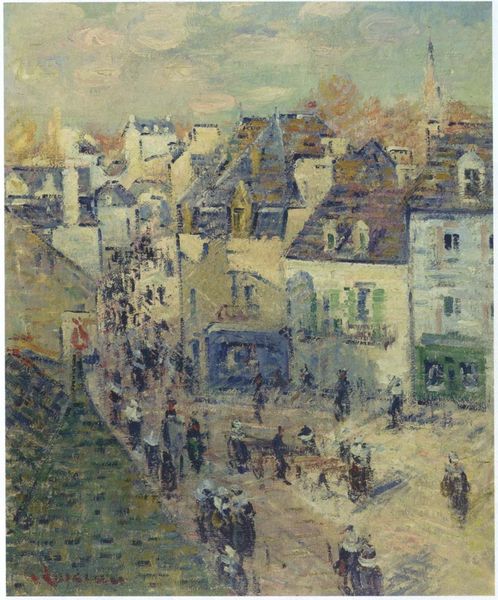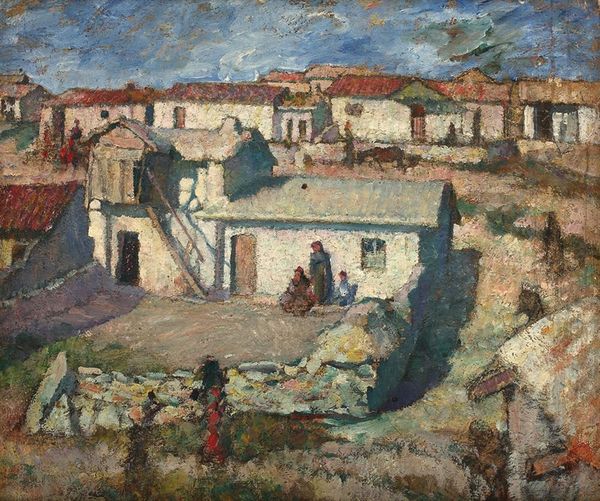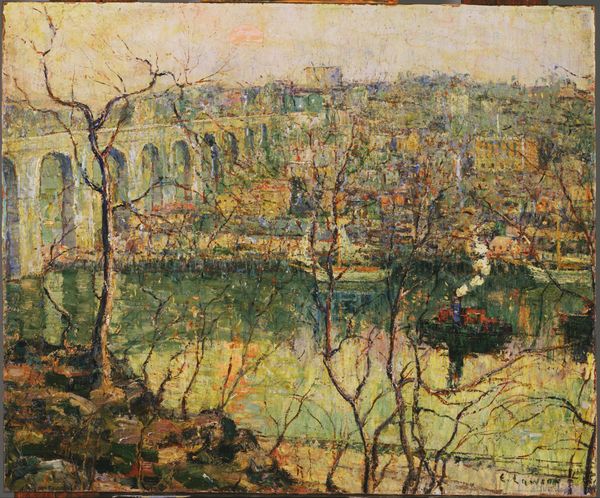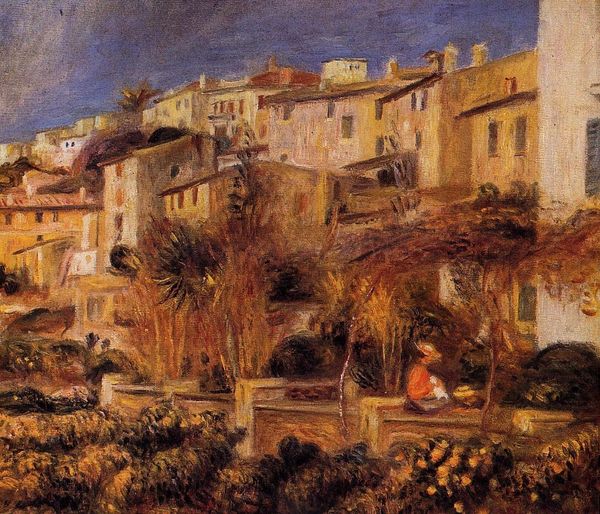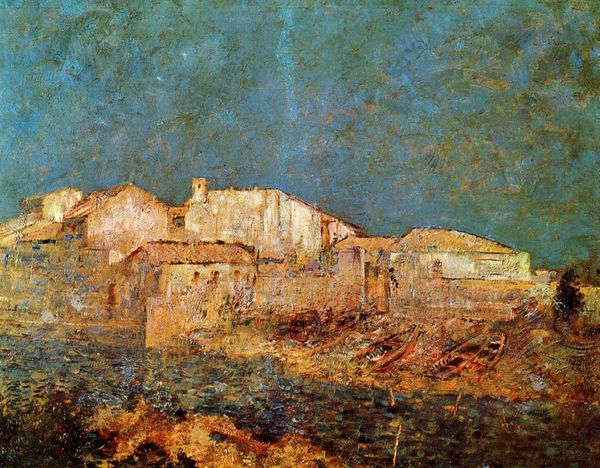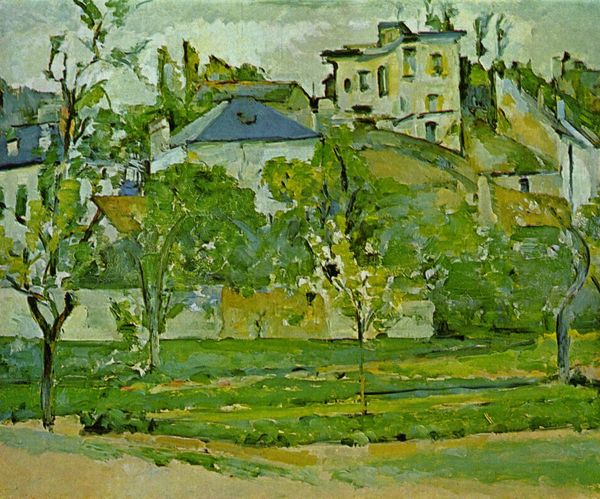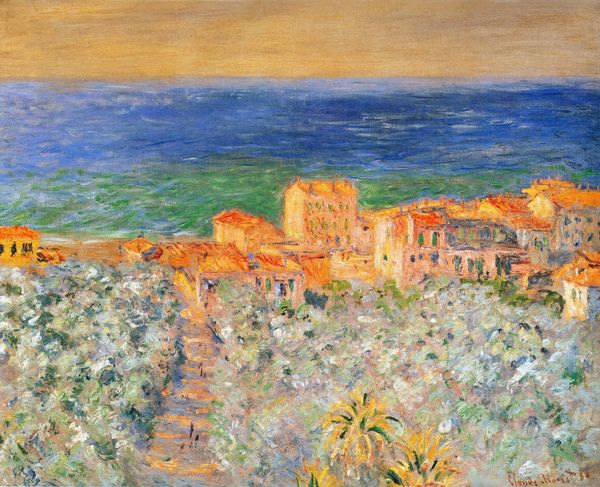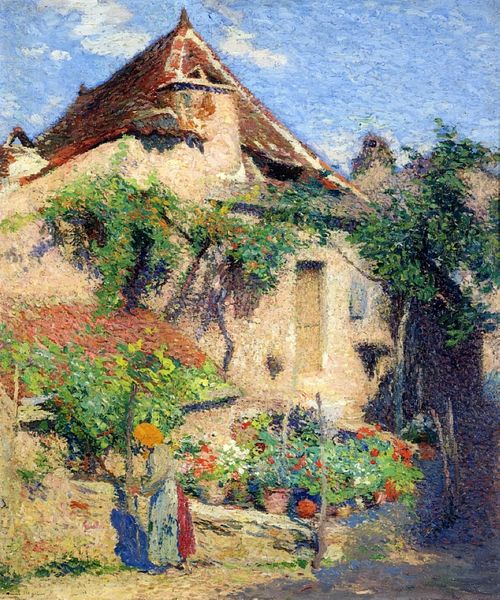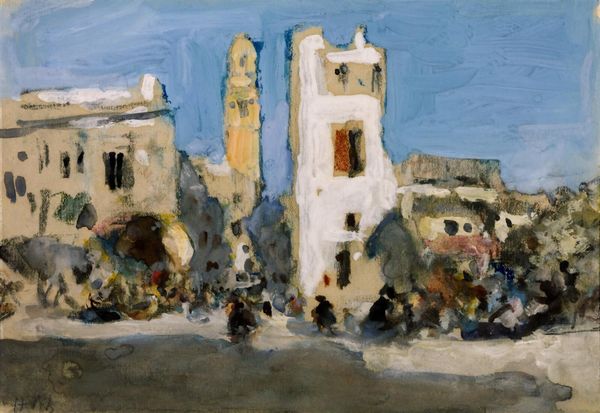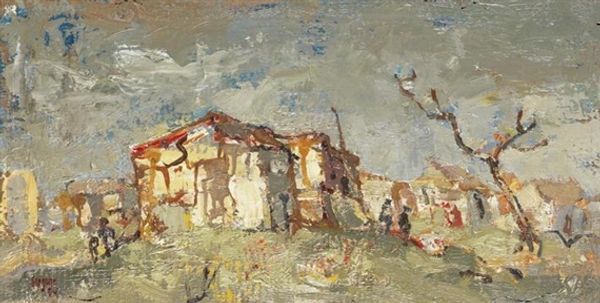
painting, plein-air, oil-paint
#
painting
#
impressionism
#
plein-air
#
oil-paint
#
impressionist landscape
#
oil painting
#
cityscape
#
genre-painting
#
street
#
building
Copyright: Public domain
Editor: We are looking at Childe Hassam's "Marche, St. Pierre, Montmartre," an oil on canvas from 1888. It depicts a bustling Parisian street scene. The rough, almost hurried brushstrokes give it a very lively feeling, like capturing a fleeting moment. What elements of its formal construction stand out to you? Curator: The initial focus is directed to the compositional tension achieved through the interplay of architectural forms and figural arrangement. Observe how the geometric solidity of the buildings—those layered planes and blocks of colour—provides an anchor against which the vibrant flurry of the street is set in motion. It presents a dialogue, not a replication. Editor: I see that contrast now, the solid versus the fluid. How does Hassam's use of color contribute to this dialogue? Curator: Hassam eschews the strictly representational, instead favoring the subjective experience of light and shadow. See how his chromatic choices are not devoted to mirroring reality, but rather they become active agents in building both form and emotional effect? Does it lean closer to conveying empirical observation or projecting psychological states? Editor: More the latter, I think. The colors almost seem to vibrate, like he's trying to capture the energy of the place more than its literal appearance. Is that a fair reading? Curator: An entirely supportable one. It serves as a precursor to further explorations within the realm of abstraction. Hassam is using impressionistic tenets but nudging at the door of what might come next. Considering the role of such 'minor' Impressionists enhances our understanding of that entire movement's core. Editor: It's interesting to see it not just as a record of place, but a construction of feeling through form and color. I’ll have to think about Impressionism and its relationship to modernism more broadly now. Curator: Precisely. By meticulously analyzing the artist's formal choices, we glean a deeper comprehension of the aesthetic motives.
Comments
No comments
Be the first to comment and join the conversation on the ultimate creative platform.
